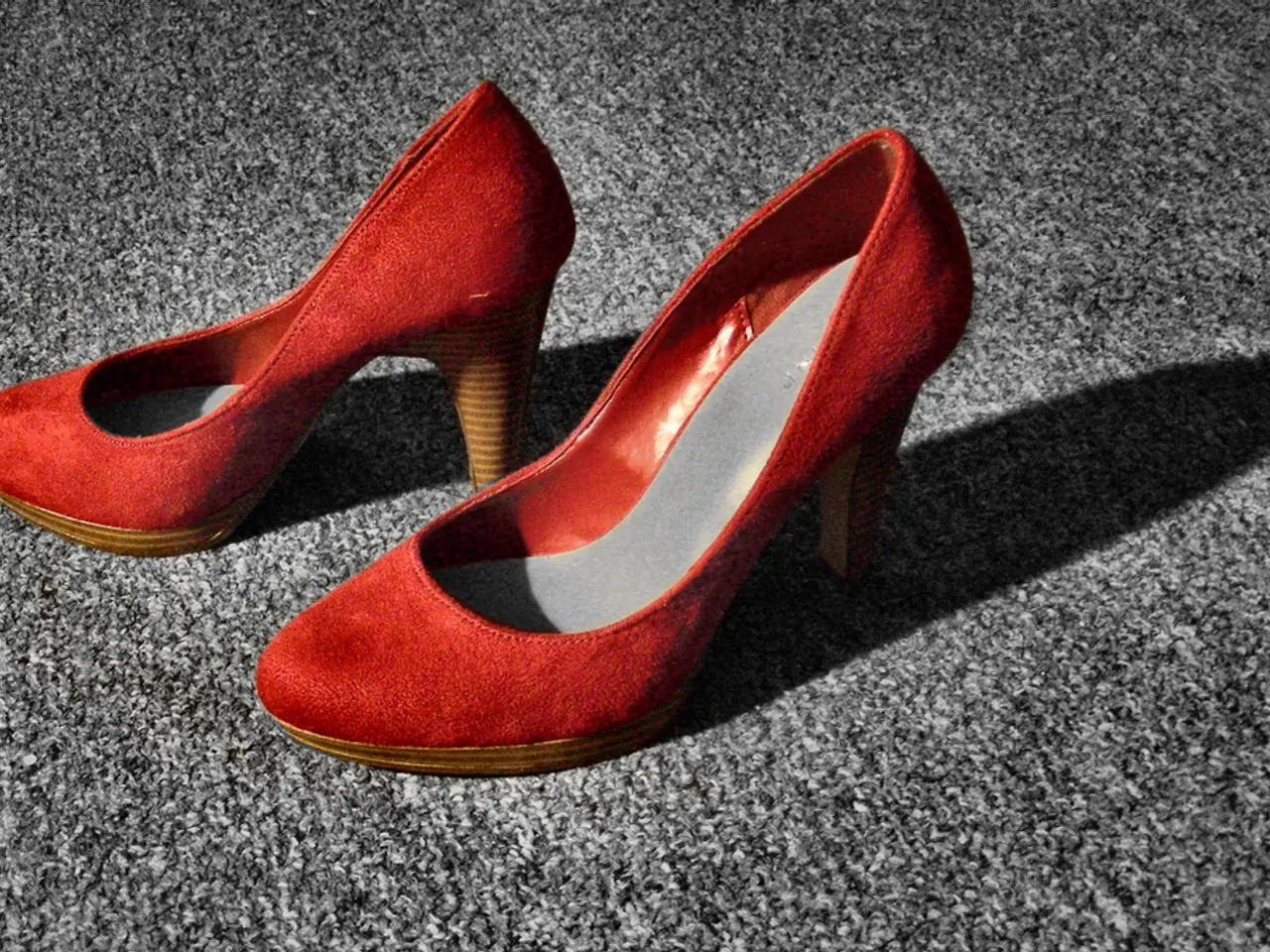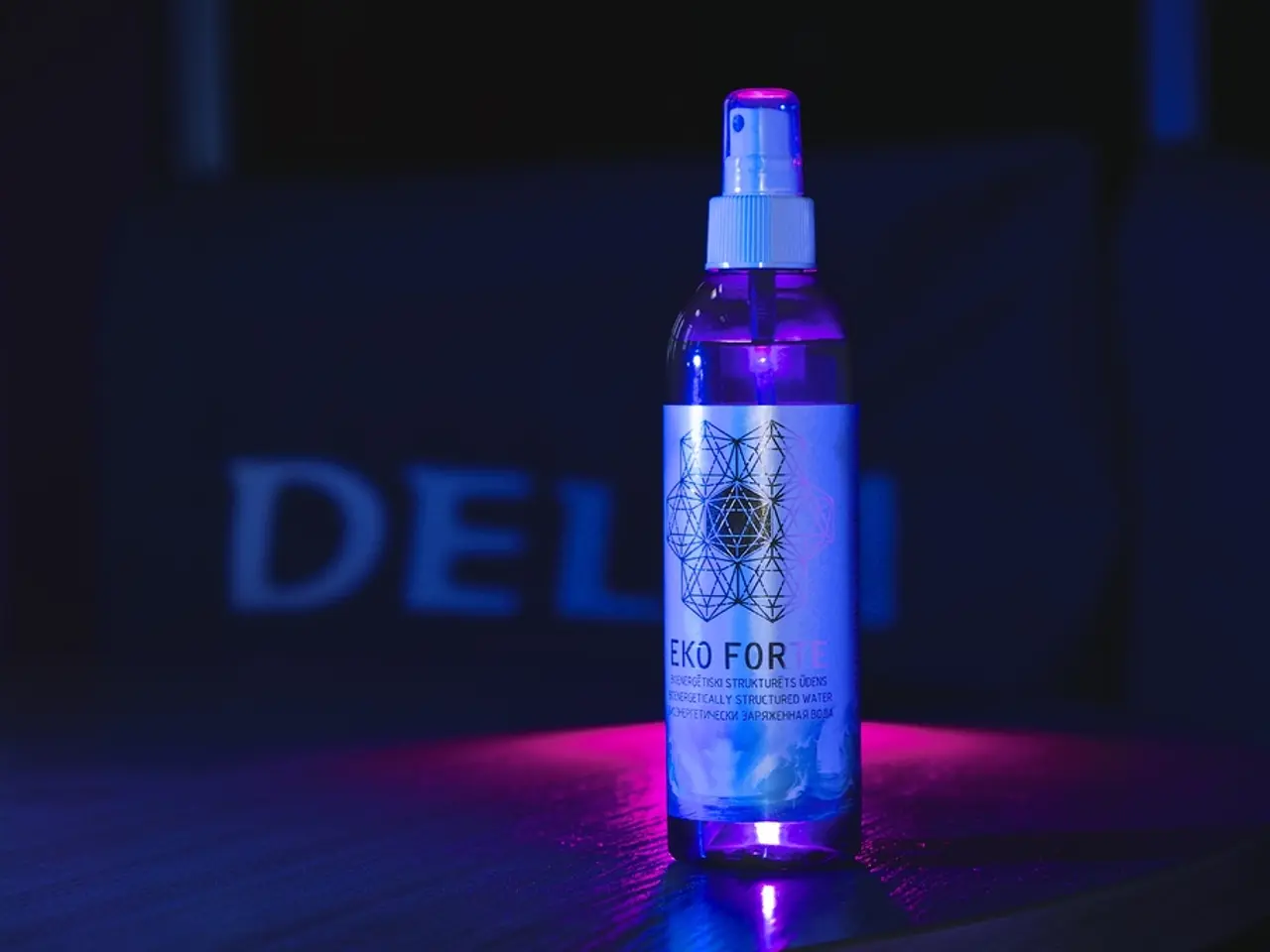Foot peeling at the bottom without itchiness: 5 possible explanations
Peeling Feet: Causes, Symptoms, and Treatments
Peeling feet, often a common issue, can be caused by various factors and require different approaches for treatment. Here's a guide to understanding the causes, symptoms, and treatments for peeling feet.
Causes of Peeling Feet
Peeling feet without itching can be attributed to several factors. Dry skin, friction from tight or ill-fitting shoes, and certain skin conditions like dyshidrotic eczema or mild fungal infections are common culprits. Dry skin tends to peel due to a lack of moisture and environmental factors, while friction induces skin thickening and peeling as a protective response.
Symptoms of Peeling Feet
If you notice your feet peeling without itching, it might be due to dry skin, friction, or a skin condition. However, if accompanied by other symptoms such as redness, soreness, tenderness, or persistent peeling, it's essential to consult a healthcare professional.
Treatments for Peeling Feet
Treatments for peeling feet depend on the cause. For dry skin, regular moisturizing with thick emollients or foot creams can help restore skin hydration and prevent peeling. For friction-related peeling, avoiding tight or ill-fitting shoes and using protective padding can reduce skin irritation.
For dyshidrotic eczema, managing triggers (allergies, stress, moisture) and using topical corticosteroids prescribed by a healthcare provider can help. If a fungal infection is suspected but itching is absent, antifungal creams or powders may be used after confirmation by a doctor.
Other Causes of Peeling Feet
Peeling feet can also be a symptom of underlying medical conditions such as anorexia nervosa, thyroid disease, kidney disease, diabetes, or vitamin or mineral deficiencies. In such cases, addressing the underlying condition is crucial for treating peeling feet.
Sunburn on the Feet
Sunburn on the feet can occur due to forgetting sunscreen when exposed to the sun on the soles. Symptoms include redness, soreness, tenderness, and peeling that occurs around 3 days after sun exposure. Treatment includes avoiding the sun, staying hydrated, cooling the skin, applying aloe vera gel, and taking OTC pain medication.
Blisters on the Feet
Blisters are welts that develop due to friction, often caused by tight or uncomfortable shoes that rub the skin when walking. They cause soreness and pain, and if they pop, it may look as though the skin on the feet is peeling. Blisters usually resolve on their own within 1 to 2 weeks, but stopping the activity that caused them, covering the blister softly with a bandage, keeping the area clean, and avoiding popping or draining them can help with healing.
Athlete's Foot
Athlete's foot is a fungal infection that can cause peeling skin on the feet, and may or may not cause inflammation and itching. It can be contracted in warm, moist environments such as showers, locker rooms, shared towels, socks, shoes, and can cause peeling in areas such as between the toes, on the soles of the feet, on or around the toenails, and can also lead to cracks or fissures in the skin.
Wearing clean, moisture-wicking socks, keeping the feet cool and dry, using antifungal powders or sprays inside the shoes after each use, and wearing flip-flops or shower shoes in public showers and changing rooms can help prevent athlete's foot.
For persistent or severe cases, prescription medication may be necessary. If you suspect athlete's foot, it's essential to consult a healthcare professional for an accurate diagnosis and targeted treatment.
When to See a Medical Professional
If peeling is persistent, worsening, or associated with other symptoms, consulting a healthcare professional or podiatrist is recommended for accurate diagnosis and targeted treatment. For recurring blisters, changing footwear or wearing protective socks or pads where the blisters occur may help to prevent them. For athlete's foot, early detection and treatment can help prevent complications, so it's essential to consult a healthcare professional if you suspect athlete's foot.
References
[1] Mayo Clinic. (2020). Peeling skin on feet: Causes and treatments. [online] Available at: https://www.mayoclinic.org/diseases-conditions/dyshidrotic-ezcema/symptoms-causes/syc-20367677
[2] Healthline. (2021). Peeling skin on feet: Causes and treatments. [online] Available at: https://www.healthline.com/health/peeling-skin-on-feet
[3] WebMD. (2021). Peeling skin on feet: Causes and treatments. [online] Available at: https://www.webmd.com/skin-problems-and-treatments/peeling-skin-on-feet-causes-and-treatments
[4] American Academy of Dermatology. (2021). Peeling skin on feet: Causes and treatments. [online] Available at: https://www.aad.org/public/diseases/a-z/peeling-skin-on-feet-causes-and-treatments
- Dry skin, friction from tight or ill-fitting shoes, dyshidrotic eczema, or mild fungal infections could be causing the peeling feet without itching.
- Sunburn on the feet can prompt peeling, redness, soreness, tenderness, and pain around 3 days after exposure to sun, requiring treatment like avoiding the sun, staying hydrated, cooling the skin, and using aloe vera gel.
- Blisters developed due to friction typically cause soreness, pain, and skin peeling, healing on their own within 1 to 2 weeks with the help of stopping the activity, covering the blister, keeping the area clean, and avoiding popping.
- Athlete's foot, a fungal infection, might be causing peeling skin on the feet and can be prevented by wearing clean, moisture-wicking socks, keeping the feet cool and dry, using antifungal powders inside the shoes, and wearing flip-flops in public showers.
- Peeling feet could be a symptom of underlying medical conditions like anorexia nervosa, thyroid disease, kidney disease, diabetes, or vitamin or mineral deficiencies and should be treated by addressing the underlying issue.
- Skin care products for health-and-wellness, including emollients or foot creams, and antifungal creams or powders, can help treat dry skin or fungal infections causing peeling feet, respectively.
- Predictive science may someday help in identifying early signs of other potential health issues, such as Alzheimer's or COPD, from observations of dry skin, peeling feet, and otherfoothealth observations.




